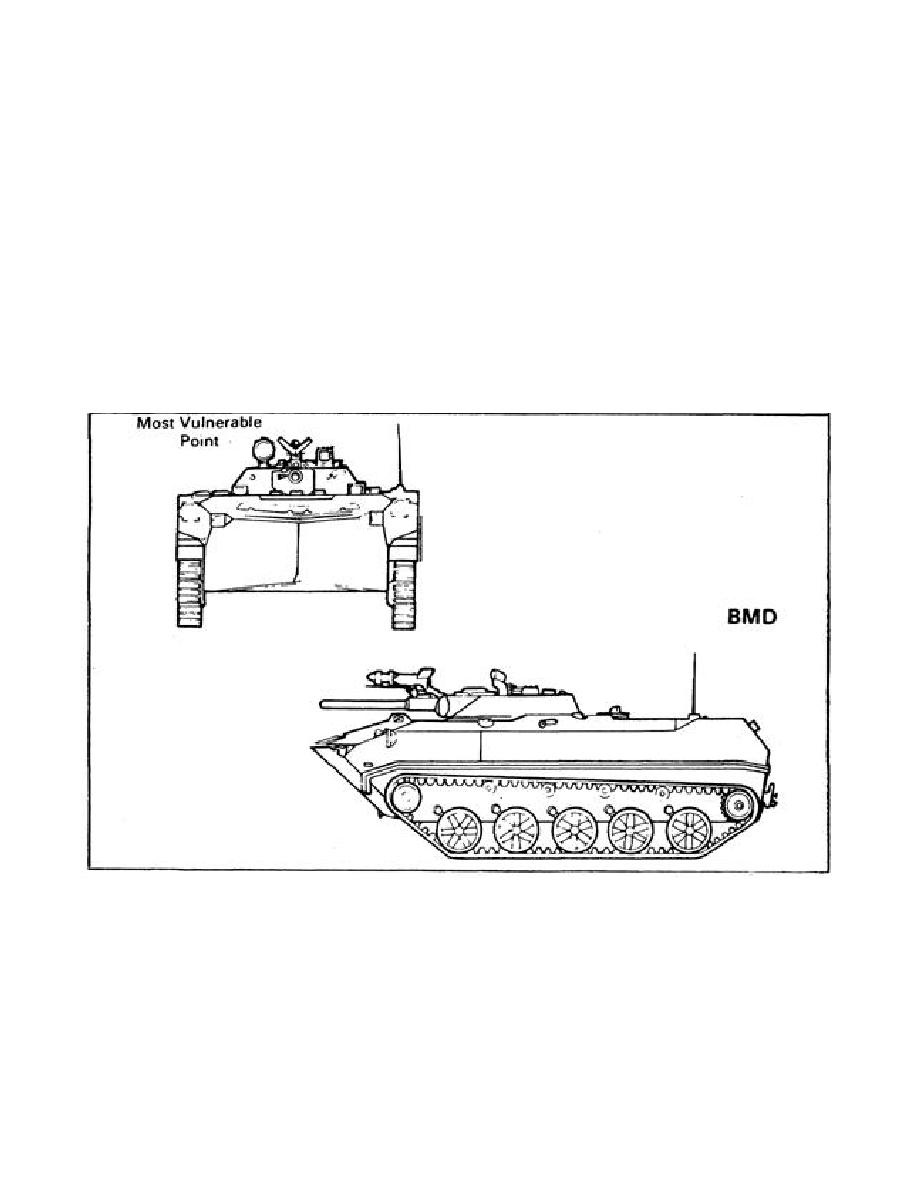
Operational airborne assault. This can be a battalion (see Figure 1-11), regiment (see Figure 1-12), or
a division (see Figure 1-13) airborne assault. This could be conducted in support of a front offensive
where a link-up would occur in several days or less. This mission would strike such key targets as
bridgeheads, headquarters or command posts, airfields, or river crossing sites. Some airborne units
may cross areas contaminated by their own nuclear, biological, and chemical (NBC) strikes to encircle
enemy forces.
Capabilities: The air-droppable BMD is considerably smaller and lighter than the BMP but has roughly
the same capabilities. It is used in OPFOR airborne divisions as an infantry combat vehicle. Its turret
armor (maximum 25 mm) is thicker than that of the BMP, but its hull is thinner (maximum 15 mm). An
internal NBC filtration system provides protection for the three-man crew and four combat troops. Two
squad members, including the squad leader, ride in the two hatch positions on each side of the driver,
while the remaining three occupy the compartment between the turret and engine. The BMD is
believed to have a maximum speed of 60 to 80 km/h on land and 10 km/h in water, with a land cruising
range of 320 km.
Figure 1-9. BMD
Limitations: Since the BMD has the same turret as the BMP, the turret armaments probably have the
same limitations except that the BMD does not have a dead space in its traverse. The passenger
space is somewhat cramped, and the airborne soldiers must dismount over the sides of the vehicles,
since there is no rear door.
MP2010
1-14



 Previous Page
Previous Page
